

Suunto Blog
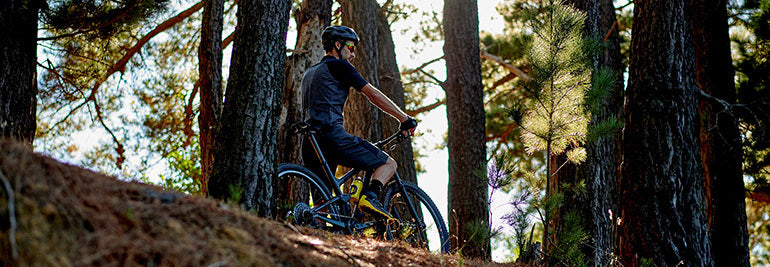
Finding the flow
Photo by Alex Gorham on Unsplash
Studies on flow states show when athletes are experiencing them the thinking part of their brain is offline. “The less you think, the better you perform,” quips Markus Arvaja, a certified sports psychology consultant and senior lecturer in coaching at Finland’s Haaga-Helia University of Applied Sciences. “We’ve studied athletes, the best of the best, studied their brains when they perform, and they have less brain activity in their prefrontal cortex. Which means they have automated their skills so they can purely enjoy their sport.”
When he’s not teaching at university, Markus, himself an ice hockey, football and tennis player, works as a mental coach for Finland’s national women’s ice hockey team and the national youth tennis team. He’s a board member of the Finnish Society of Sports Psychology. He’s passionate about people performing at their absolute best.
“Studies show peak flow states are intrinsically motivating experiences,” he says. “People become so involved in an activity that they are on automatic pilot, totally absorbed in that experience. It’s a merging of action and awareness. Thing is, you can’t force yourself to go into flow. But their are elements that help you enter into the flow space.”
Flow states, peak performance, being in the zone, runner’s highs; these are all interchangeable terms describing the transcendent experiences athletes, artists, musicians and creatives report having. Maybe you’ve experienced one yourself. Time slows down, you become totally immersed in the task at hand, it feels effortless, maybe the world seems more vivid, and you have sense of mastery. They are when athletes have their best performances and, according to Mihaly Csikszentmihalyi, who wrote a seminal book on the topic, they are a key aspect of human happiness. It’s something we can all experience, not only elite athletes and artists.
Neuroscience has revealed much about what’s happening in the brain during a flow state. Brain waves change from beta, more rapid waves underlying waking consciousness, to somewhere between alpha and theta waves, where we daydream and first enter into sleep. This is when many people have their best ideas. Neurochemicals associated with pleasure and performance – endorphin, serotonin, dopamine, norepinephrine and anandamide – are the raw ingredients of flow. Perhaps the most interesting fact is how different regions of the brain respond during flow; for example, studies have found the prefrontal cortex, the area of the brain associated with self monitoring – and also self criticism – goes offline during flow. Instead of constantly analysing and evaluating, we do things spontaneously.
“Sometimes coaches can interrupt the flow happening for athletes by giving too much information for the athletes’ minds,” Markus says. “It’s better to say only one or two things.
“For flow, your mind should be free of worry and unnecessary thoughts. Stay in the present moment by quieting the mind and turning off the inner critic. Mindfulness certainly helps with this.”
Stay tuned for the next article in our series on flow: the ingredients of flow.
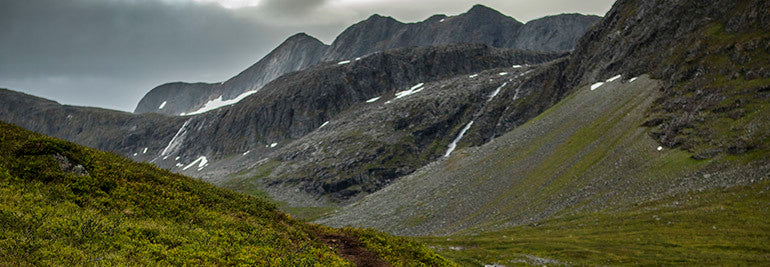
Big data for Vertical Week 2019 is here: find out who came out on top!
When we crunched the statistics from all the training around the world during Suunto World Vertical Week 2019, we felt our hard work had paid off. It had given you all the excuse to chase meters outside, whether on behalf of your nation, chosen sport or for your own challenge – exactly our intention.
There’s something about the sight of a hill or mountain in front of us that calls us to push ourselves. The challenge of the ascent is just as satisfying as the view from the top. That’s why we do it! Well done to everyone who participated.
Top countries
This year, we first report a major upset. In the previous two years, Austria has come out on top as the nation that achieves the most vertical gain by average. Not this year – the Alpine nation has been knocked off its perch. This year, Italy, Slovakia and Slovenia, all mountainous nations, climbed more than Austria. But more surprising, Portugal also came in ahead of Austria.
In the last two years the Swiss have also come in near the top, but this year they have dropped to the eighth position. What’s happened in Austria and Switzerland? Someone tell us!
Honorable mention
This year, Spain deserves an honorable mention. Spain came first in three divisions: totals per country, mountaineering, and trekking. It was also in the top five for four different activities: mountaineering, trekking, mountain biking and cycling. All up, Spain features in six of the nine country-related lists below, the only country to do so. Well done Espana!
Here are the results by nation
While these numbers might not seem so mind-blowing, remember they are averages, and a high average is indicative of many big days out in the hills.
Italy 385 m
Slovakia 360 m
Slovenia 346 m
Portugal 342 m
Austria 337 m
Spain 308 m
Switzerland 288 m
France 283 m
Canada 276 m
Norway 261 m
Totals per country
This year we also decided to look at the totals per country. In these countries, World Vertical Week participants have been really active and gotten out there to climb, even only a little, to add on their country’s total number. These little efforts have added up.
Spain 645.000 m
France 546.000 m
Italy 379.000 m
United States 377.000 m
China 250.000 m
Austria 216.000 m
United Kingdom 183.000 m
Japan 150.000 m
Norway 142.000 m
Switzerland 140.000 m
Average ascent by activity
At least as interesting as the country numbers are the activity specific stats. From these, we can see that skiers clearly put in the biggest average days. Trail running and mountain biking are probably under-represented because it’s winter in the populous Northern Hemisphere.
Like Vertical Week 2018, ski touring, mountaineering and trail running came out on top this year. The question is, which nations did the most of each?
Ski touring 830 m
Mountaineering 594 m
Trail running 474 m
Mountain biking 355 m
Trekking 311 m
Hiking 213 m
Nordic skiing 199 m
Cycling 193 m
Running 100 m
Activity by country
Ski touring
France 1127m
Italy 1085m
Austria 864m
Switzerland 828m
Germany 776m
Two countries pass 1000 m of vertical gain by average!
Mountaineering
Spain 1071m
UK 947m
Poland 798m
USA 716m
Germany 651m
Trail running
Hong Kong 1176m
Japan 901m
Malaysia 813m
China 765m
Portugal 713m
Asia dominating, showing the growing popularity of the sport in the region!
Mountain biking
Italy 476m
Slovakia 474m
UK 437m
Spain 422m
Austria 394m
Cycling
Colombia 499m
South Africa 485m
Israel 446m
Spain 438m
Italy 363m
These nations have favorable weather for cycling in March!
Nordic skiing
France 379m
Canada 321m
USA 285m
Norway 243m
Austria 212m
Trekking
Spain 566m
Italy 527m
Malaysia 363m
Italy 362m
Poland 304m
Individual top performances
While we can’t give away too much information here, such as who and where, we can share some insight in the individual top performances over the week: To be on the pointy end of the rankings one had to climb more than 10000 meters over World Vertical Week. And to stand out with a single activity one had to climb 4000+ meters in one go!
Thank you, everyone, for participating!
Read three inspiring stories from the World Vertical Week!
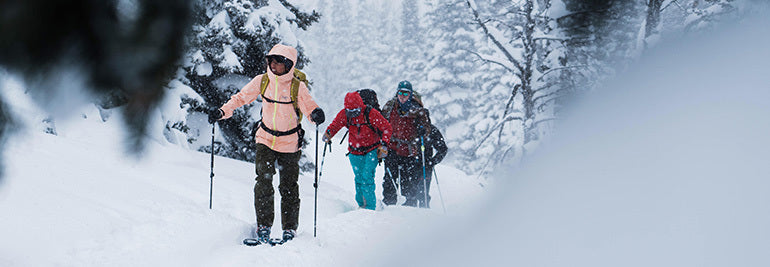
Chasing meters: top stories from Vertical Week 2019
The fourth annual Suunto Vertical Week is coming to a close and we have selected three winners of the week’s photo contest on Instagram. Each of them will receive a powerful Suunto 9 to record their efforts! We received many other inspiring images and stories (#verticalweek) – thanks to everyone for their contributions! Keep climbing!
Baby in tow in Norway
We were very impressed by Hilde Hoff Nordskar in Norway. She climbed 3246 m in a week, while towing her seven-month-old baby boy, who slept through it all. Some have it easy! Well done, Hilde!
“Vertical Week was overall very hard and fun and brought some new inspiration to my maternity leave,” Hilde says. “We live close to a forest and my daily goal was to summit the top of a nearby peak called 'Solobservatoriet' (580 m). With my seven-month-old son in the wagon behind, I started every morning skinning up the hill no matter the weather. The highlights was to experience the uphill in all these different winter wonderland conditions and finish every session with a big smile on my face and a very rested kid.”
View this post on Instagram
Punta di Terrarossa 🏔 3246 meters climbing in a week 🎿👶🏻 #VerticalWeek #Suuntoapp @suunto_norge @suunto @thule #thulebringyourkids #dæhlie
A post shared by hildehoffnordskar (@hildehoffnordskar) on Mar 9, 2019 at 8:48am PST
Big training block in California
Eric Triplett in sunny California enjoyed a big week, climbing 3500m. This beautiful shot of sunrise from Mount Wilson illustrates the motivation behind the call to scale peaks; massive rewards for our hard work.
“Suunto Vertical Week was the perfect way to finish up a three month training block for my upcoming race,” Eric says. “The race features 3000 m of climbing over 56 km so my primary goals for Vertical Week were to simulate the amount of gain relative to the distance of my race and to accumulate at least 3000 m of gain. I’m happy to say I was able to complete 3500 m for the week including a 33 km run with 2100 m of vertical. Thanks to Suunto for putting on this motivating celebration of vertical!”
View this post on Instagram
The sun rises on the last day of #VerticalWeek 2019 // It’s been a while since I’ve cracked 11,000ft of gain in a week so I made it a goal given both Vertical Week and that 9 Trails is coming in just two weeks. Admittedly going beyond 10,000ft seems to bring on the sore knees and other random leg pain but that only serves to highlight what to work on in the future // Been super excited about getting my hands on “Training for the Uphill Athlete” by House, Johnston and Jornet. I think it’s going to help take things next level. // I’m also very happy with where @Sagerunning training has taken me in the last 3 months. I’ve never thought I could maintain the kind weekly mileage that I have for so long. I was always afraid to put intervals into 20mi+ runs but I survived. It hasn’t been easy but listening to my body and making small adjustments has got me through. // #utlrarunning #trailrunning #runinrabbit #borntorunfree #rabbitTrail #RADrabbit #gotailwind #timetoplay #salomon #suunto #salomonrunning #9T #NineTrails #sagerunning #SanGabrielSunday #longrun #ANF
A post shared by Eric Triplett (@fleshymutant) on Mar 10, 2019 at 9:08pm PDT
New season in Finland
Janne Korpela in Finland has begun a new training block now spring has nearly arrived. It hasn’t been in a walk in the park, either, on some days finding himself waist deep in snow. Keep going, Janne!
“Vertical Week was surprisingly good, since it was only the third proper training week of the year for me with 19 hours of training,” he says. “The highlight of the week was the first day, when a six hour session was surprisingly easy. And last Sunday was a beautiful spring day!
“The goal was 8000m in eight days, but we pushed it a bit yesterday to climb the height of Everest (8848 m)! I did all the climbing on an old ski slope close to my home. One lap is about 35 meters of climbing!”
View this post on Instagram
A post shared by Juosten (@juosten_) on Mar 10, 2019 at 6:02am PDT
Lead image: © Dylan Totaro / Suunto
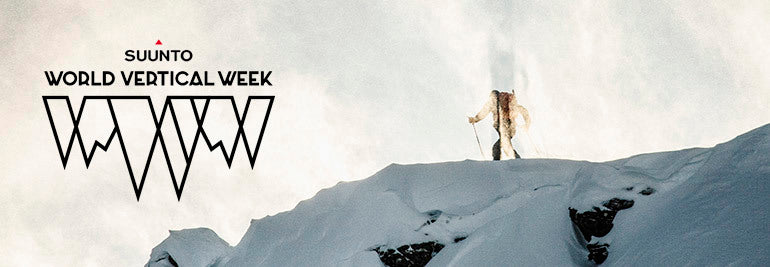
Suunto World Vertical Week 2019
For some of us a climb is a challenge, an obstacle to overcome. With training we get stronger and can climb the same hill easier – or faster. But it usually does not last long before we set our eyes on even bigger or faster or more challenging climbs.
For others a climb is an adventure, a promise that once we reach the top, col or ridgeline new horizons will open up and broaden our views and, on the way down, we will get to play with gravity.
Whatever your motivation, Suunto’s annual Vertical Week is here again!
Suunto World Vertical Week 2019 starts on Sunday, March 3rd and ends on Sunday, March 10th.
Put on your running shoes, hop on your bike or release your heels and start skinning up the hill. Track your adventures with your Suunto watch, upload your activities to Suunto app and, by the end of the week, we’ll know who climbs the most in a week. And it’s not only about individual performances: we want to see which country averages most vertical during the week and which activity takes you up the biggest climbs.
To participate, join the challenge in Suunto app!
SHARE YOUR EXPERIENCE AND WIN A SUUNTO 9
Share your Suunto World Vertical Week experiences on Instagram using Suunto app’s photo sharing with data overlays and use tag #VerticalWeek. Three of the most inspiring posts will win Suunto 9 watches.
Terms and conditions apply. Read them here.
Learn how to share your activities using Suunto app
Don’t have Suunto app yet? Get it now!
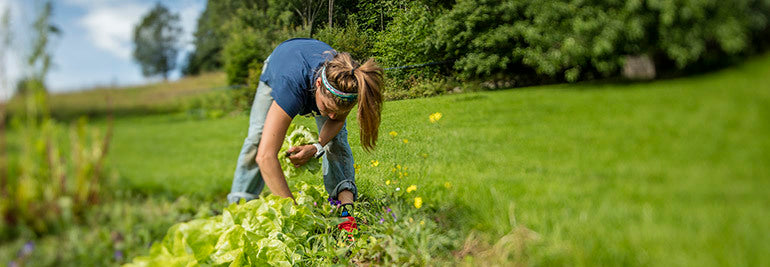
Fuelling the engine: talking nutrition with Emelie Forsberg
For an increasing number of people today nutrition isn’t only a question of what food we eat, it’s also about where that food has come from and how it’s been produced.
When she's not in the mountains, you can find Emelie in her garden or preparing delicious meals. © Matti Bernitz
Eating seasonally
For Swedish mountain running champion Emelie Forsberg sustainability plays an important role in her decision making around diet. For this reason Forsberg eats seasonally. “In the winter, for example, I try not to buy fruit or anything transported from far away places,” she says. “For me, the seasons are something to go through.”
Fall, she says, is a time to begin spending more time indoors, thinking, reading and reflecting, slowing down after the summer. Winter, Forsberg says, is a time for taking care of oneself, resting, and recharging. Spring is a time of awakening, coming out of hibernation, and using more energy. Summer is a time of fun and intensity.
Forsberg eats different foods during each season. “I really enjoy eating in the winter,” she says. “For breakfast, I eat porridge with berries on top. I’m living in Scandinavia, and we have many berries and greens, and a lot of herbs. In the winter we eat a lot of potatoes. The best is eating potatoes with olive oil and salt! In summer, we have smoothies, more salads, and colder foods.”
Straight from the earth
Forsberg is also an avid gardener. Her dream is to become as self sufficient as possible. Leafy greens, beans, potatoes, berries, carrots, you name it, Forsberg is growing it. Gardening, working with the earth, being in harmony with the seasons, is a form of spirituality for Forsberg. She believes the fresher it is the better.
© Kilian Jornet
Relaxed eating
Listening to her body is a big part of how she eats, rather than following meal plans. “I never have a meal plan,” she says. “In the beginning you need to get into a routine, but now I don’t even think about it anymore. You just need to use your imagination. Some people get obsessed about eating healthy. I’m not like that. I’m relaxed in the way I’m eating.”
Bean power
She is a big fan of beans, and admits to eating them at least once a day. “Even bean cakes and bean cookies,” she laughs. “Like, everything beans – 10 different types of beans, five different types of lentils! When you are vegetarian it’s important to know where you are getting your protein from.”
Easy, go-to meals
Forsberg stores a lot of food in her freezer, including bean burger patties. If it’s going to be a busy week she’ll make a big meal on Monday and store it to have again later in the week. “I like to have back up meals.
“I also make pesto out of everything, any type of green, even the tops of carrots,” she says. “A bit of garlic, olive oil, sun seed flower, nuts and seeds, and I eat it with pasta. I was eating it with bean pasta just now!
Salad with carrot and lentil patties
Salad (green salad, rocket, carrots, beets, brussels and onion from the garden)
Patties: 3 carrots, grated4 dl of red lentils; slightly cooked, can be a bit hard.1/2 an onion2 tbsp spoon of tahinia little parsleychili, salt and black pepperMix it all together and fry, or bake them in the oven!
Lead image: Photo by Blair Fraser on Unsplash.

Fuelling the engine: a commonsense approach to nutrition
Eating well is essential for athletes. The bigger your goal, the more nutrition has to play a central part of your training plan. Take shortcuts on how you eat, and you’ll eventually pay for it.
But the topic of diet, what we should and shouldn’t eat, has become touchy and confusing. There are all sorts of diets out there – paleolithic, vegan, gluten-free, low carb, high carb – each one with advocates claiming their way is the one true way.
Matias Anthoni prefers a common sense approach to nutrition.
“Nowadays it’s become a big topic, and everyone has his or her own opinion, and it seems hard to find the real truth,” says Matias Anthoni, Suunto’s in-house personal trainer. “It’s become trendy to follow a kind of diet.”
Anthoni, 26, has a Bachelor in Sports and Health Promotion, and gives nutritional advice to Suunto employees, as well as personal fitness training. He takes a simple, “nonsectarian” approach to nutrition, rather than buying into the hype of one diet over another.
“As long as you get the nutrients it doesn’t really matter what diet you follow,” he says. “You can teach your body to thrive on different diets. The body is quite adaptable. But we do need certain basics. The question I always ask is, would my grandma recognize it as food?”
Here are Anthoni’s five down-to-earth tips for good nutrition:
1. Start with your meal rhythm
This is the first topic Anthoni’s raises with his clients during a consultation. Just improving how often you eat can improve what you eat. Many of his clients skip meals or have long breaks between meals; this results in blood sugar levels dropping, then tiredness, and then cravings and impulses for unhealthy snacks.“With a more steady meal rhythm you avoid big spikes in the blood levels, make better decisions, and are less likely to just reach for a chocolate bar,” he says.
Meals should be about three hours apart, and consist of a good breakfast, lunch and dinner, with smaller, healthy snacks in between. “It leads to healthier choices and you’ll have more energy,” Anthoni says.
2. Plan ahead
“You can’t be a top athlete if you are eating poorly; it’s not just about training, it’s about eating as well,” Anthoni says. “It really helps if you plan your meals like you plan your training. Know what you are going to buy and know what you are going to make. When you come home from work, or after a training session, it’s all ready to go.”
3. Follow the Nordic plate model
Anthoni says in Finland there’s a traditional “plate model” or a way to divide your plate into three sections: one half should be salad and vegetables, one quarter should be carbohydrates, and one quarter protein. This balanced plate ensures you will get enough of all the key nutrients.
4. Eat quality food
Quality can seem like a vague notion, so Anthoni recommends a common sense approach here, too. “Have a look at your plate – are there all the colours – red, green, yellow?” he asks. “Are you eating the same thing every day?” Anthoni suggests finding and following basic nutrition guidelines. “They provide a good start, and then make small changes to fit yourself from there,” he says.
5. There’s no one size fits all diet
Deciding what to eat depends on your goals. “The more you move the more you need,” Anthoni says. “If your goal is building muscle mass, then you need more protein. If you are an endurance athlete, eating enough carbohydrates becomes more important. There is no one size fits all, no one plan can fit everyone. You need to have your own plan.”
Lead image: Photo by Roosa Kulju on Unsplash.
READ MORE
Fuelling the engine: talking nutrition with ultra runner Lucy Bartholomew
Fuelling the engine: talking nutrition with triathlete Mel Hauschildt














































































